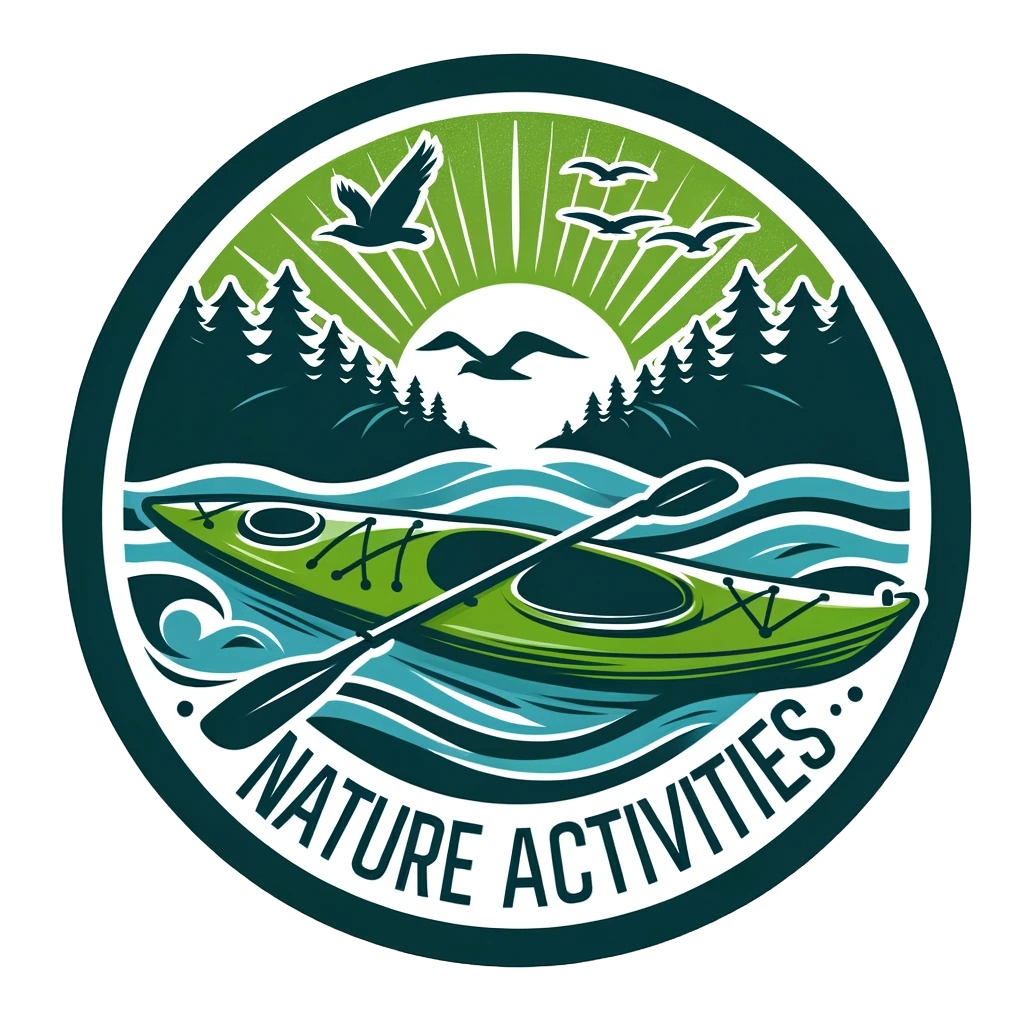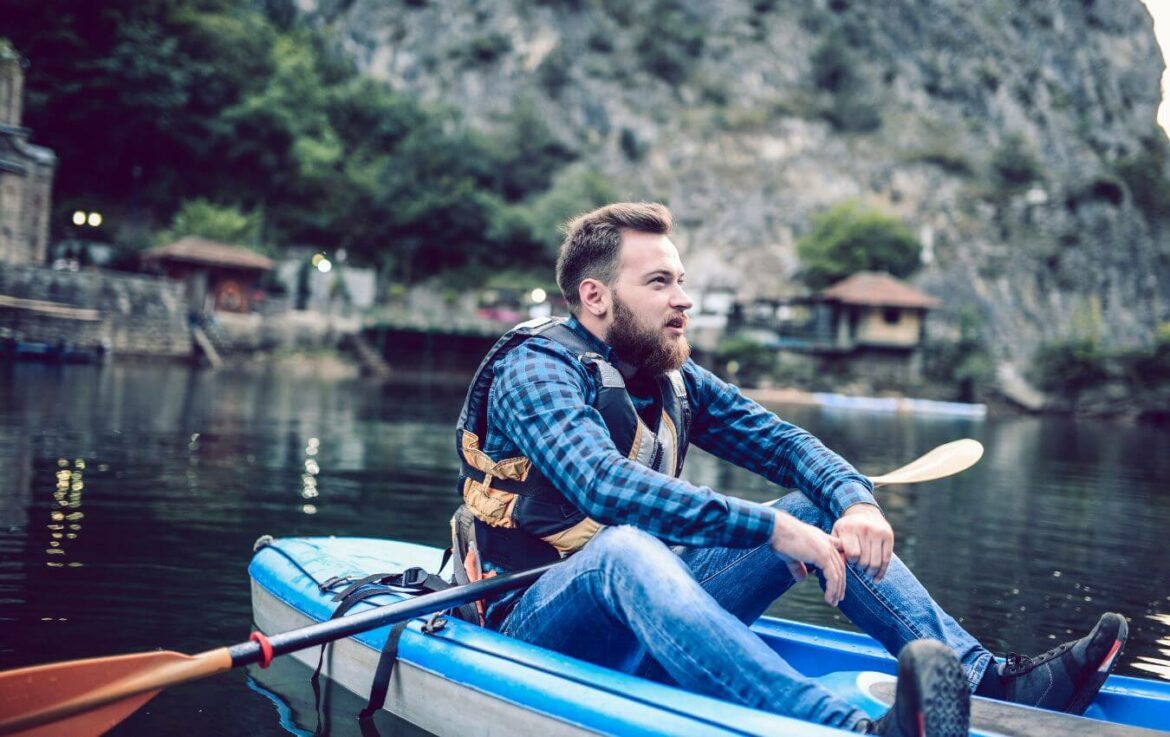Welcome to the world of kayaking! Whether it’s the lure of exploring calm waters or the thrill of conquering whitewater rapids, this guide will equip the beginner kayaker with all the necessary information to make your first kayaking trip memorable and safe.
A kayak trip is an activity that delights the senses, challenges the body, and gifts the soul with serene experiences in nature. It’s as diverse as the kayakers themselves—with a wide range of boats to choose from and bodies of water to explore, from calm ponds to adrenaline-pumping ocean waves.
Understanding the Basics: Kayak Types and Gear
Types of Kayaks: Discover the Differences
When choosing a type of kayak for your adventure, the decision can feel a bit like flipping through a menu at a five-star restaurant—lots of great choices, but what’s the right pick? Touring kayaks are the limousines of the kayaking world, long and slender, perfect for those cross-water expeditions. They hold enough gear for an overnight trip and slice through the water like a knife through butter.
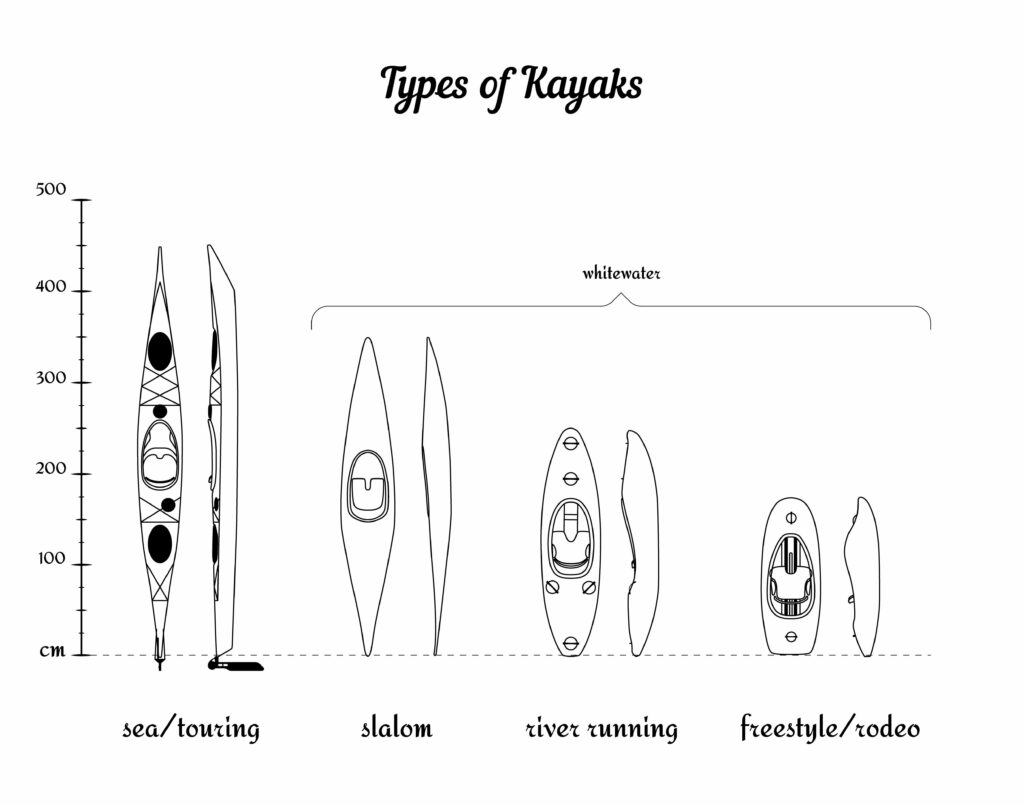
Tandem kayaks, on the other hand, are the “buddy systems” of boats, built for two and great for sharing paddling duties (and the occasional loving squabble over direction). If you want convenience and portability, inflatable kayaks are your jam – they pack down into a neat little burrito and set up in a snap.
For those looking to feel the embrace of their kayak, a sit-inside model offers protection from the elements and a sense of oneness with the boat. Lastly, recreational kayaks are all-rounders, stable, and user-friendly, ideal for a leisurely jaunt in a calm body of water.
Here’s a quick bullet-point round-up:
- Touring Kayak: Sleek, storage-rich, ideal for long distances.
- Tandem Kayak: Built for two; teamwork makes the dream work!
- Inflatable Kayak: Like popping a tent, but for water.
- Sit-inside Kayak: Snug as a bug, shielded from splashes.
- Recreational Kayaks: The easy-going cousin, great for beginners.
Essential Kayaking Gear: Dive Into the Essentials
Before you hit the water, you’ll need to gear up. Picture a knight without their armor or a DJ without their headphones – you get the idea, it’s crucial! Kayak paddles are your trusty steeds, propelling you forward and guiding your vessel.
As for life jackets or personal floatation devices (let’s keep it fancy), think of them as your silent guardians, always there to keep you buoyant. Paddle floats are like your aquatic wingman, there to support you when you need to clamber back into your kayak after a swim.
Don’t forget about neoprene footwear; they’ll keep your toes warm and protected from those pesky underwater surprises. Carrying a spare paddle is just smart—because in the water, there’s no roadside assistance. And last but certainly not least, pack a first-aid kit because safety isn’t just a buzzword; it’s a lifestyle.
To recap, essential kayaking gear includes:
- Quality Kayak Paddles: The more comfortable, the longer you’ll paddle.
- Life Jacket: Non-negotiable, your safety depends on it.
- Paddle Float: Handy helper for self-rescue scenarios.
- Neoprene Footwear: Because cold feet are only good for runaway brides.
- Spare Paddle: Because Murphy’s Law doesn’t take a day off.
- First-Aid Kit: For those little oopsies that happen when you’re getting your splash on.
Preparation: Before You Hit the Water
Paddling Techniques and Kayaking Tips
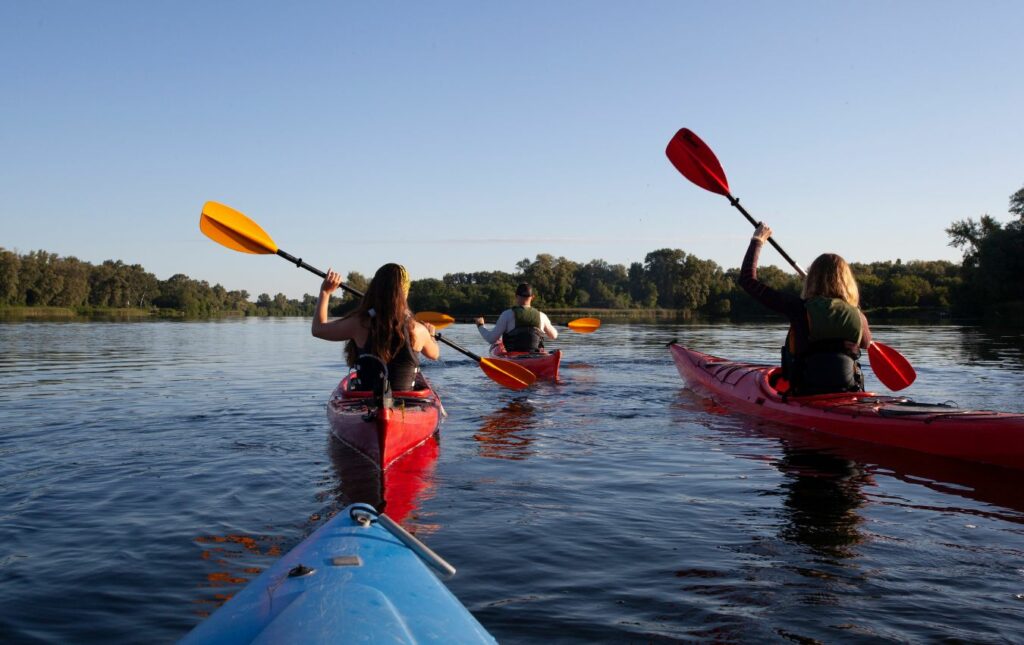
Now, let’s talk paddling techniques. Think of them as the dance moves you need to master to glide across the water with the grace of a swan. A solid forward stroke keeps you moving ahead without zigzagging like a drunk raccoon.
Sweep strokes let you turn that floating chariot with precision and the reverse stroke? That’s your braking system—critical for preventing unscheduled meetings with rocks or other kayakers.
But it’s not just about the strokes; body posture counts too. Sit up straight like your grandma always told you, and use your core, not just your arms.
Here are a few key paddling tips:
- Keep your strokes close to the kayak for more control.
- Use your core muscles – they’ve got more stamina than you think.
- Practice the low brace to stabilize yourself if you feel wobbly.
Checking Weather and Water Conditions
The key to a safe and enjoyable experience is understanding the whims of Mother Nature. Always check the weather conditions before heading out; clear skies and gentle winds are your friends.
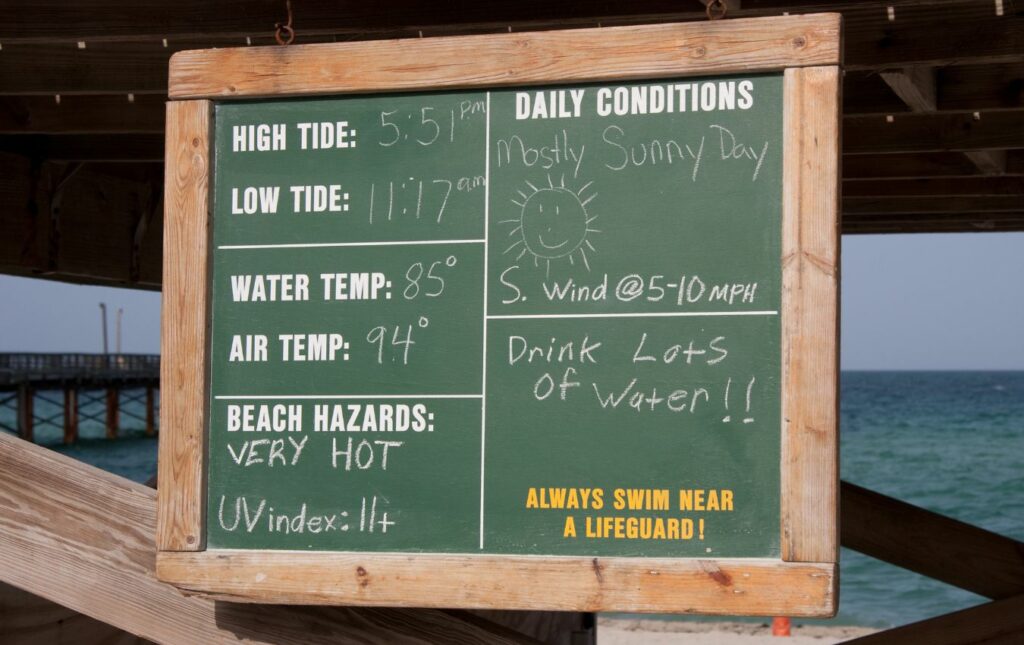
Water temperature can be a fickle fellow – dressed for it with the right gear can mean the difference between a refreshing dip and a shiver-fest. And when it comes to windy conditions, know this: the wind can be your playful ally or a capricious foe that turns paddling into an involuntary workout session.
For beginners, calm waters and fresh water, which are generally more predictable and gentle, are the equivalent of the kiddie pool – perfect for getting your paddling feet wet.
Take note of the following:
- Weather apps are great, but so is looking up at the sky.
- Layers are key; dress for the water temperature, not just the air.
- Calm and fresh waters offer a more predictable environment to learn.
Safety Measures and Comfort Tips
Dressing for Success
When dressing for kayaking, remember that fashion comes second to practicality. The goal is to maintain your body temperature, regardless of the water’s chill factor. A life jacket will keep you afloat, but it will also offer some warmth.
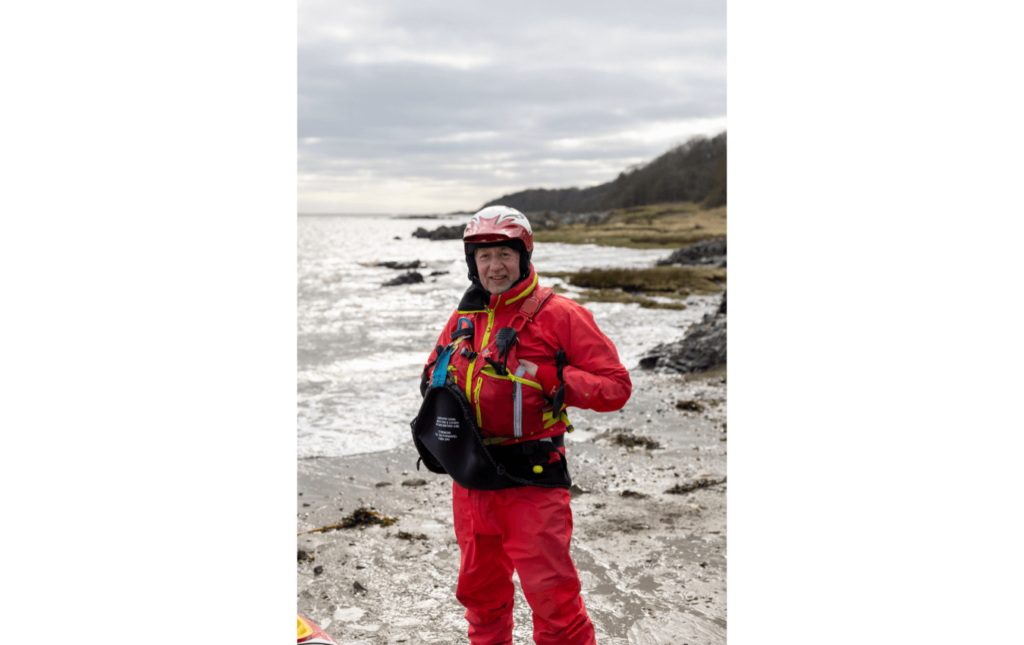
Add a mid-layer that can handle getting wet and still keep you toaster than toast. And those neoprene shoes? They’re not just to make a statement; they’ll keep your little piggies from icicle status.
So, dress like an onion: in layers, and always plan for an unexpected dip—because, well, it’s water, and you’re in a boat.
Remember these nuggets of wisdom:
- Embrace layers—they’re like a thermostat you can wear.
- A life jacket is a must-have—like seatbelts in a car.
- Neoprene does more than just rhyme with ‘mean’; it’s a cold water buster.
Navigation and Stability
Steering your kayak isn’t all about the paddle—your feet have a role to play, too. Foot pedals are there to help you maneuver, so get cozy with them; they’re your allies in the quest for the perfect line through wind and waves.
Balancing your boat is an art form, achieved through equal parts cargo distribution, body positioning, and Jedi mind tricks. Okay, maybe not the last one, but confidence and practice do make perfect.
When you master the use of foot pedals, balancing, and choosing your paddling location with wisdom, you’ll find stability on the water and maybe even in life.
Anchor these tips in your mind:
- Foot pedals are like the steering wheel of your kayak—use them wisely.
- Balance is essential—don’t make your kayak look like a capsizing cruise ship.
- Choose your path like a skilled captain—they didn’t nickname it ‘captain’s choice’ for nothing.
Advanced Considerations for the Avid Beginner
From Paddling to Touring
You’ve nailed the basics, and now the kayak world is your oyster—or, at the very least, a very large pond. Start dreaming of an overnight trip, chart your course, and pack your gear. The sense of freedom as you glide across various bodies of water, from rivers to bays, is unparalleled.
Just remember to respect Mother Nature; she’s a tough teacher if you try skipping lessons on safety and preparedness.
Eye on the prize:
- Prepare, plan, then paddle – in that order.
- Know your limits, but don’t be afraid to gently nudge them.
- Respect the water—dry land won’t save you when you’re out at sea.
Upgrading Skills and Equipment
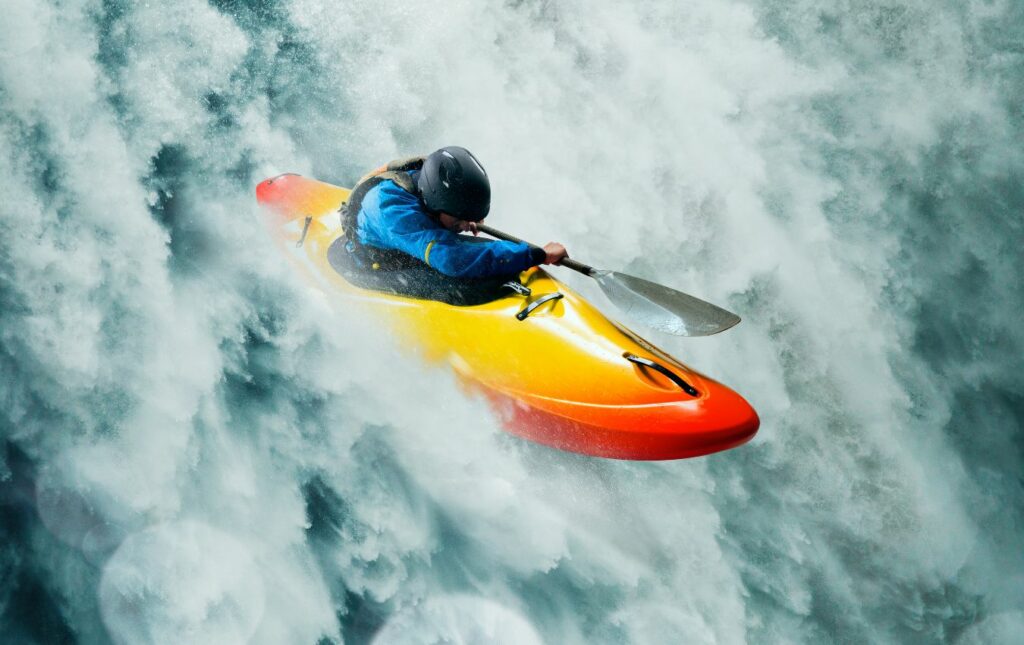
Teaming up with someone equally eager or venturing solo with upgraded gear, it’s time to expand that horizon. Grab a double kayak for double fun, or tweak your single vessel to a ninja level of performance. This is where regular kayaking turns into a passion—when you start amassing a pile of gear that would make any outdoor store envious.
The key kernel of kayaking advice:
- Invest in gear that grows with your skills.
- Fit your equipment to your ambitions; dreaming big requires big gear solutions.
- Nothing says ‘ready to paddle’ like a gear garage you can kayak through.
On the Water: Launching Your Kayak and Paddling Away
Launching Tips
Launching is the first small step in your kayaking adventure, and sandy beaches are the red carpet of kayak launch sites. Walk your vessel to the water’s edge, climb in, and push off like you’re escaping a deserted island.
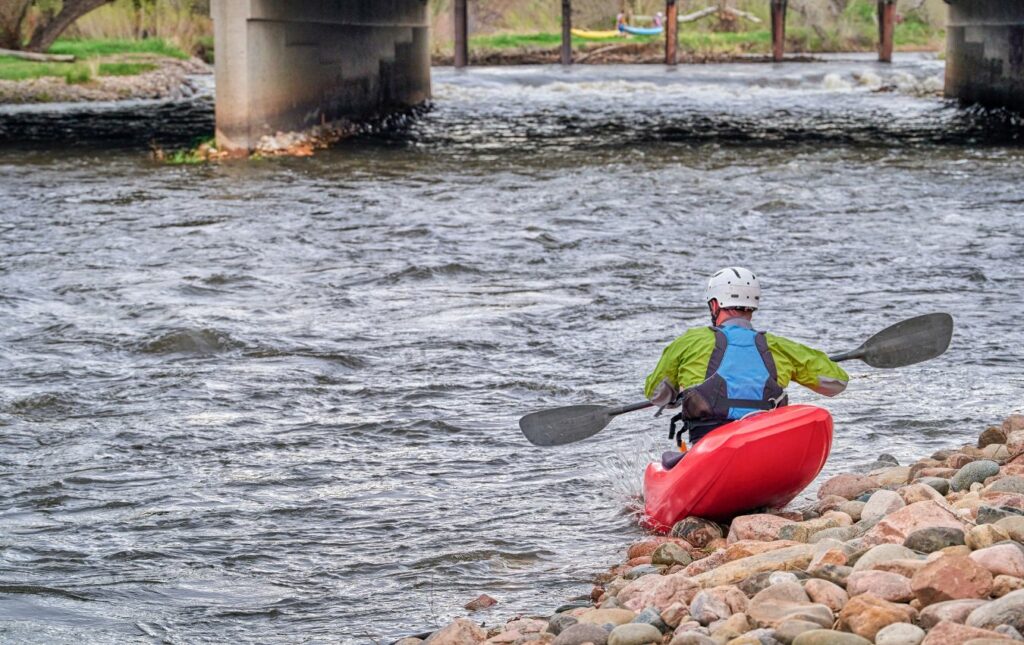
Dock launching? Well, it’s a bit like getting out of bed—swing your legs over, lower yourself gracefully (or just plop down), and paddle away before anyone notices your awkward flailing.
Don’t forget these launching tips:
- From a beach: nose the kayak into the water, stabilize, and slide in.
- From a dock: the lower you go, the easier it’ll be—gravity is your co-pilot.
On-Water Techniques and Handling
Once afloat, your paddle becomes an extension of your will. Efficiency is the name of the game in saltwater – no wasted effort or paddle flaps. In cold conditions, keep moving and take breaks to prevent the chill from seeping into your bones.
When the wind picks up, paddle into it like a champ—it’s all about angle, timing, and sheer stubbornness. And, hey, if all else fails, remember: looking cool is half the battle won.
Maneuver like a pro by:
- Matching your paddle rhythm to the conditions; it’s like a dance with nature.
- Bracing against the wind, angle your paddle for the best possible resistance.
- Keep paddling through the cold—it keeps your body and morale warm.
After the Trip: Maintenance and Reflection
Kayak Care
After you’ve conquered the waterways, it’s time for some TLC for your trusty water steed. Rinse the salt off your gear—think of it as a spa day for your kayak.
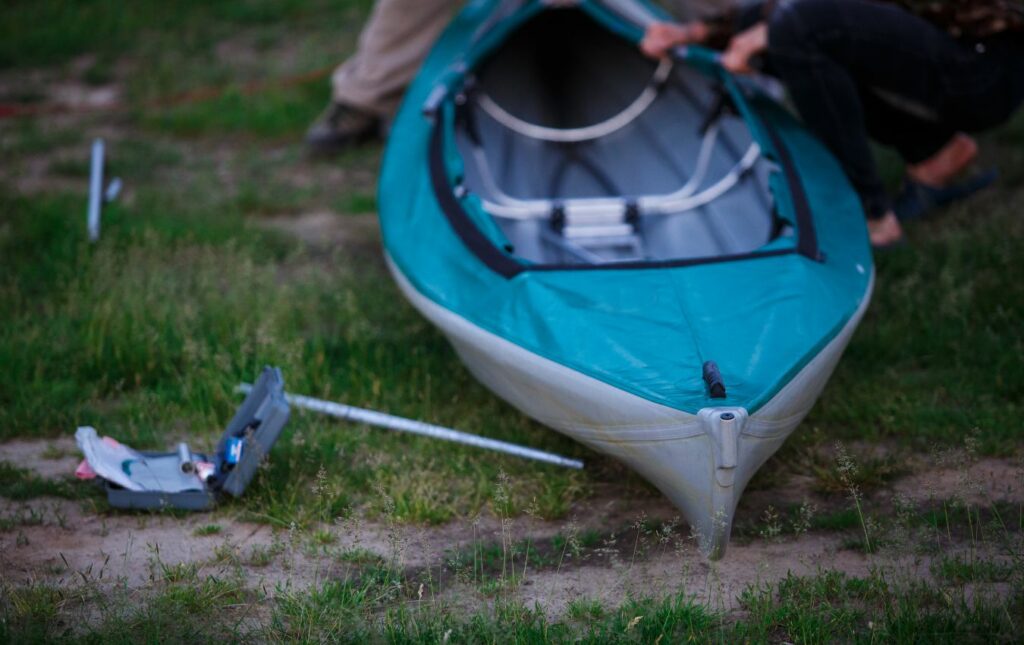
Check for any damage and make repairs; even kayaks need band-aids from time to time. Store everything properly, and your kayak will be ready to roll for the next adventure, as eager as a puppy on a walk day.
Quick tips for kayak care:
- Rinse and pamper your gear—salt and dirt are the enemies.
- Repair even the small damages; they grow up fast.
- Storage is key—treat your kayak like a favorite toy, and put it away right.
Reflecting on Your Experience
Reflection is not just for mirrors. Look back on your kayaking escapade and note the highs, the lows, and the laughs. Every splash tells a story, and every misstep is a step toward becoming a seasoned kayaker. Cherish the memories, learn from the “oops” moments, and above all, start planning the next one!
Reflect and grow:
- Journal your trips—each entry is a chapter in your kayak saga.
- Learn from mistakes; they’re just unintentional lessons.
- Celebrate the victories; even the little wins are worth a victory paddle.
The Journey Continues
Your kayaking journey is only just beginning. Let the joy and fulfillment you’ve found in the cadence of the paddle stroke carry you forward. Embrace the hobby, join the community of paddle enthusiasts, and never grow tired of this sport that so beautifully mixes tranquility with a dose of adrenaline.
Until next time, keep paddling, exploring, and always, always wearing sunscreen because, let’s face it, a sunburn never leads to a good kayaking story!
